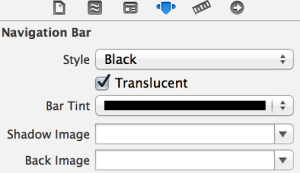The recent hype surrounding the re-design of iOS has gotten me thinking a lot about the current state of UI/UX/HIC (give it a name) and its direction in the future.
For starters, let me quickly remind all the trolls out there that when Mac OS X was released, many (if not most) of the designers hated it. The iPad, when it was initially released, was resolutely bashed by most as “an oversized iPod”. Time and and ultimately, the market, will determine whether iOS7 was a success. Let’s just leave it at that.
Back To The Future
Looking at the progression from iOS6 to iOS7 I can’t help but think back to a great presentation given by Josh Clark two years ago:
Buttons are a Hack: The New Rules of Designing for Touch
It’s a fairly lengthy presentation but the two key points that stuck out in my mind were:
Touch interactions will help us sweep away buttons and a lot of existing interface chrome by moving us closer to the content and away from GUI abstractions.
User interfaces are an illusion. But with touch interfaces we can cut through the illusion and let people interact directly with content.
If you agree with these points, and Clark’s motif in general, then you would have to agree that iOS7 is a step forward and not a step backwards. There are certainly a number of things that could have been done better, but in my opinion I think Jonny Ive is moving us in the right direction.
Please don’t misunderstand me, there are problems with the new design of iOS. For example, the new concept of a “borderless” button and using color to indicate action is somewhat ambiguous – in my opinion. In a world where buttons have no borders, the cognitive load is increased by virtue of the fact that a user cannot reasonably determine all the touch targets on a screen simply by looking at them. For example
Take this QUIZ
If you had to think about your answer, there’s already a problem. So there are issues, but isn’t that the gap designers and developers are supposed to fill for our end users? Cheers!





